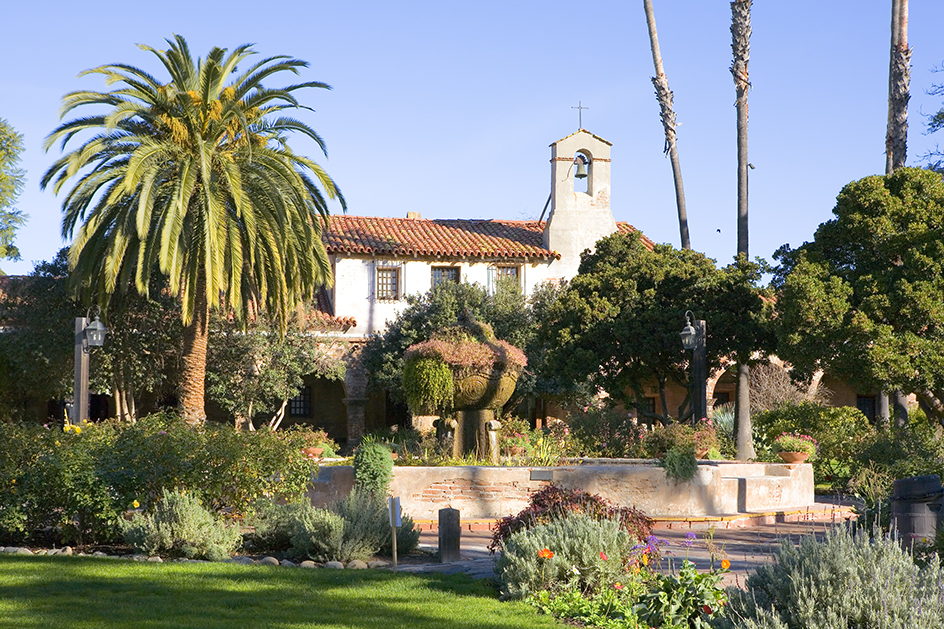Mission San Juan Capistrano is a Christian religious center that was established by Spanish Roman Catholic priests in California. Between 1769 and 1823, Spanish priests started 21 missions as centers for teaching the Indians of California about Christianity. The Franciscan missionary Saint Junípero Serra founded the mission on Nov. 1, 1776, in what is now San Juan Capistrano, California. It was named for an Italian priest from the 1400’s, Saint John of Capistrano. Local Acjachemen Indians, now called Juaneño, helped build the mission. They were some of its earliest members.

Mission San Juan Capistrano is famous for the swallows that once nested in the ruins of one of its church buildings. The birds flew in groups, heading south in October and returning in March. Their arrival at the mission was a well-known sign of the coming of spring.
The original church at the mission was built in 1777 and made from adobe (sun-dried bricks). Construction on a larger church, called the Great Stone Church, lasted from 1796 to 1806. Disaster struck on Dec. 8, 1812, when, during Mass (Catholic religious services), a major earthquake collapsed the church, killing 40 people. The Great Stone Church was never rebuilt, and services returned to the original adobe church, now called Serra Chapel.
Mission San Juan Capistrano recovered from the disaster and eventually became known as the “Jewel of the Missions.” People at the mission produced grain, leather, soap, wine, and other products for nearby markets. The mission pastureland held thousands of cattle, horses, sheep, and other animals. However, the mission suffered another setback in 1818, when attacking pirates burned parts of the mission and the surrounding pueblo (town).
In 1833 and 1834, the Mexican government seized and redistributed properties that had belonged to the missions. Mission San Juan Capistrano came under private ownership, but it was returned to the Roman Catholic Church in 1863. Restoration began in 1895. The shop buildings once used for weaving, sewing, and other chores have been converted into a museum. The campanario, or bell-wall, that was built in 1813 still rings the mission calls. Fountains and flowerbeds line the mission’s corridors and arches. A Mission Parish School opened in 1928.
In 1986, a new parish church opened in the style of the ruined Great Stone Church. In 2000, Pope John Paul II designated it a basilica. A basilica is a place of worship recognized for its religious, historical, and cultural significance.
See also San Juan Capistrano .
